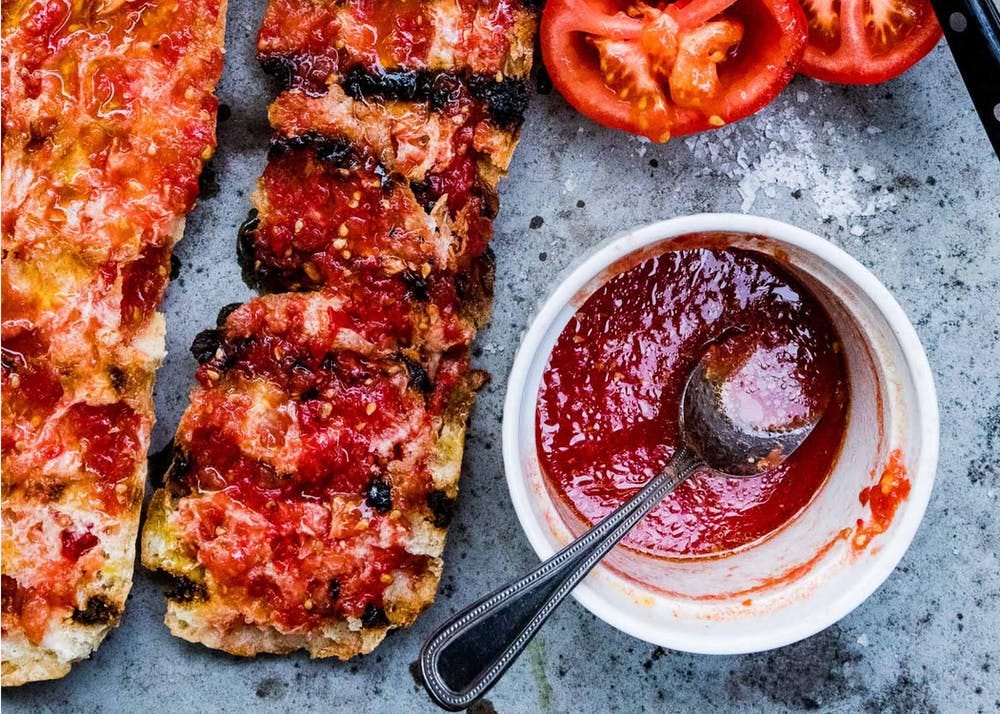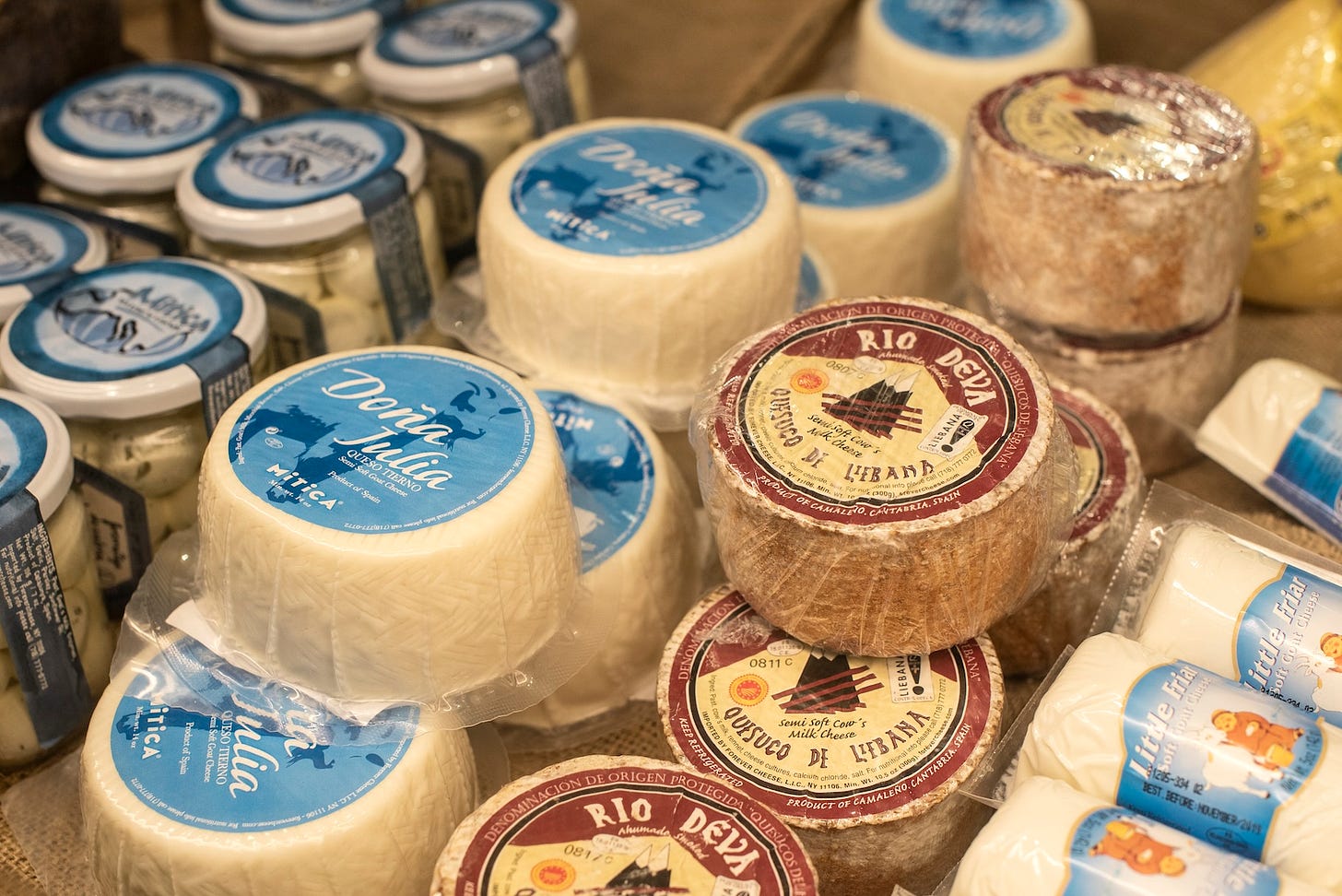Last week I shared the recipe for Trinxat, the super traditional Catalan dish of cabbage, potatoes, and bacon. And we talked about the word “trinchar,” the Catalan meaning to chop or shred. And it got me thinking…we talk about language here and there, but I’ve never really talked much about the food words of Catalan, a language I started to learn when I moved to Barcelona when I was 6. (If you missed it, last week I shared on The Chef’s List all about the land I was born, Asturias, which has its own language—but far fewer speakers).
So let’s speak Catalan, people! Or should I say, parlem Català!
Historically, Catalan is an old language that evolved separately but nearby the other Romance languages of the area: like Castellano—which evolved into the modern Spanish you’ll hear around the world—or Aragonese in the Pyrenees of Spain, or Occitan and Provençal in southern France. It evolved in the 800s in the area of northeast Spain and southwest France—on both sides of the Pyrenees mountains.
Today, Catalan is spoken of course in Catalunya (Catalan for Catalonia), as well as in Valencia, where it’s similar to a language called Valencià, and the Baleriac Islands of Spain—the Illes Balears like Ibiza (Catalan: Eivissa) and Mallorca…though because we always like to make things more complicated in Spain, there’s a subfamily of Catalan in the Balearics, including Mallorquí on Mallorca, Eivissenc on Ibiza, and Menorquí on Menorca.
And as I told you last week, Catalan is the official language of the mountainous country of Andorra, and is spoken in regions of Italy and France. There are almost 10 million Catalan speakers in the world, either as a first or second language—so if you learn it, you’ll be able to get plenty of practice!
Here we go, a few words that you might find useful if you are visiting Barcelona or beyond.
Pà (pah)– Bread. You know the very famous dish Pan con tomate? Well, in Catalan it’s Pà amb tomàquet—bread (pa) with (amb) tomatoes (tomaquet).
Mar i muntanya (mar e moon-TAN-yuh) — Literally “sea and mountains,” or what Americans might call “surf and turf”. Catalunya reaches from the tops of the Pyrenees to the Mediterranean sea, so it really is a land of sea and mountains. One of the most common versions of mar i muntanya is pollastre i gambes, a braised chicken and shrimp stew thickened with the classic picada of Catalunya, made of almonds, garlic, and bread.
Escalivada (ess-cal-ee-VAH-da) — this is one that you already know, of course! Well, most of you, if you made escalivada with me when I shared it. The word comes from the Catalan “escalivar,” which means to cook in embers. It’s a beautiful word, no?
Botifarra amb mongetes (boo-tee-FAR-ra amb moon-JET-ess) Sausage with white beans. This is an easy one, and a delicious one. Sausage is botifarra (you’ll see butifarra in Castellano) and beans are mongetes (mongeta is the singular, which means “little nun”). We have this dish at Jaleo—it was actually the favorite dish of the Senator Daniel Patrick Moynihan many years ago when he was a regular at Jaleo in DC, and we named the dish after him for some time.
Llet (Lyet): Milk. As in, Cafe amb llet, coffee with milk. Don’t forget, the two Ls together in Catalan make a “lyeh” sound, which is very typically Catalan and maybe difficult for non-Catalans to say at first. But you’ll need to learn it if you want milk in your coffee!
Xarel·lo (sha-RELL-loo): This is actually the word I wanted to tell you more about when I thought of this post…what is that extra dot between the Ls doing? So you might remember when we talked about Cava that Xarel·lo is one of the main grapes used to make sparkling wine in Catalunya. The “l·l” is called the “ela geminada,” the twin Ls, which use a “punt volat” (a flying point) in between the two Ls. It sounds like a prolonged L, so just give it a bit more time and you’ve got it. And you’ll get a glass of Cava!
Peix (Paish): Fish. You might have guessed this one, since it looks so similar to the Castellano “pez.” If you read the WCK cookbook, you might have come across my recipe for the Catalan stew Red Snapper Suquet, which we could have called suquet de peix. Suquet actually comes from a Catalan word for juice, suc, because the stew is so juicy you need a piece of bread to scoop up it all up.
Formatge (foor-MAH-jeh) — this one looks more like Italian or French than Castellano. Any guesses? It’s cheese of course! The origins of this word are Latin, formaticum, which refers to the forms that cheeses are made in—just like the French fromage and the Italian formaggio. A little different from the Castellano “queso,” right?
That’s it for today…but tell me, do you think this is as interesting as I do? It’s super useful stuff if you’re planning a trip to Barcelona soon…which I think you should be! (And don’t forget, I shared my Ultimate Guide to Barcelona over at The Chef’s List!)
See you on Wednesday!










👌 T'has deixat la calçotada, per aquests dies!
THis was so extremely interesting, and I am so happy I learned words I didn't already know from my fabulous trips to Barcelona. But we need MORE, please!!!!!